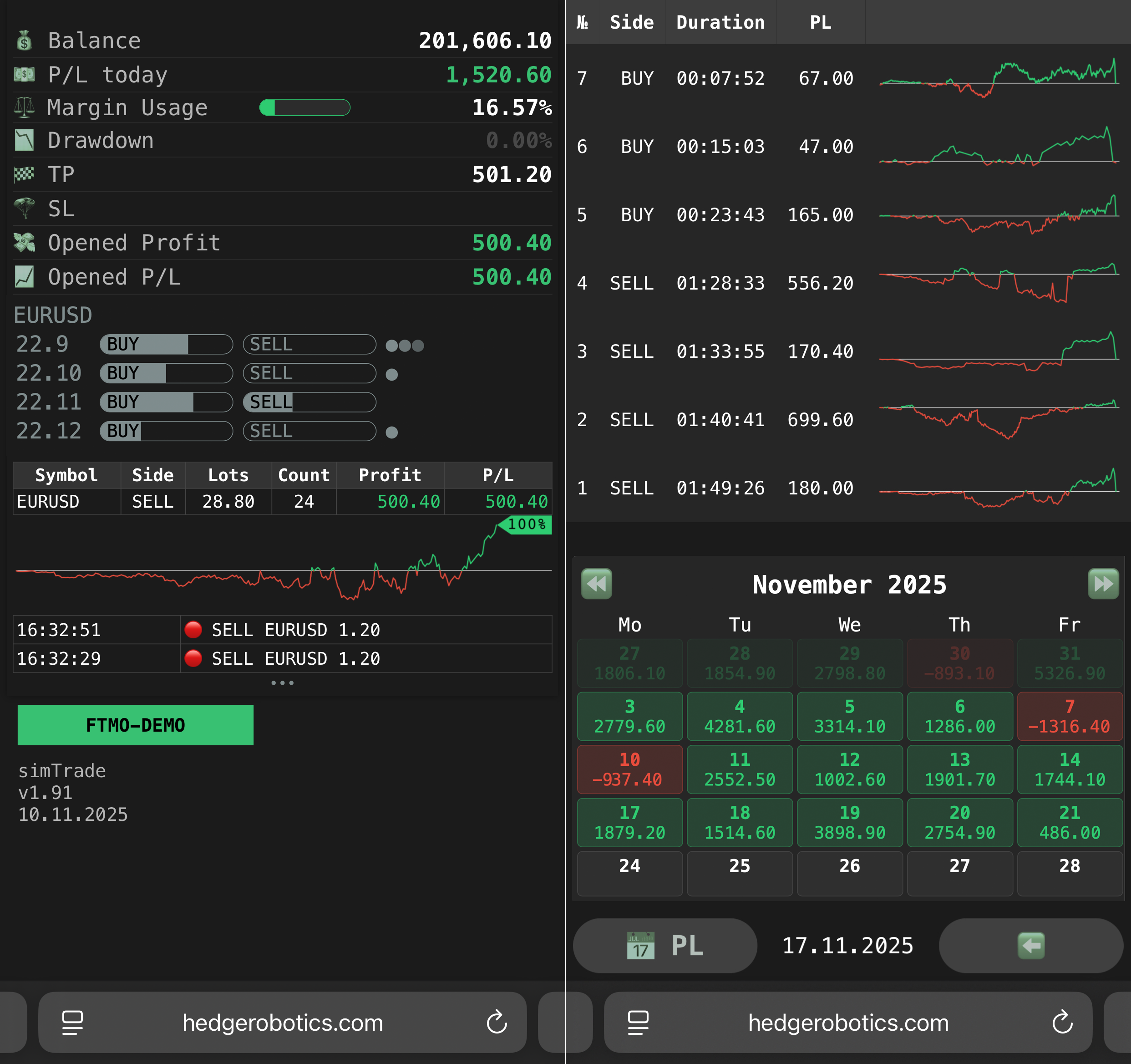
Hedge Robotics
A unified environment for autonomous AI models that evolve through real-world action.
What We Build
We build a unified inference environment where models are modular, interchangeable, and connected through shared data channels and context. The system runs models locally, supports training, testing, and live replacement, enabling continuous evolution without breaking the architecture.
How It Works
Training & Evaluation Environment
Models undergo training and validation in simVault — a computational environment that stores datasets, training results, metrics, revisions, and experiment history. Training is performed on a distributed server cluster with independent agents that receive tasks and register results back into the system. In simVault, a model is not just a file, but an entity with metadata, parameters, history, and status.
From Models to Ensembles
After training, models are not simply used individually — they are combined into ensembles (neurosims), where each component has its role: signal layers, decision models, contextual models. The system treats a model as a module connected to shared data channels. This allows new models to be integrated without rebuilding the entire architecture.
Continuous Evolution
Over time, models become outdated: market conditions change, metrics decline, new data emerges. The system supports model revisions, automatic revalidation, and replacement of models in the live environment without stopping the process. Evolution is not a one-time model upload, but continuous updates based on metrics.

Real-World Deployment
Hedge Robotics is not a research environment. Models trained and evolved in simVault are deployed into real systems, where their performance has tangible consequences.
One of these systems is simTrade, a trading pipeline that operates on live financial data and executes real positions based on model ensembles.
simTrade operates by:
- Reading data in real-time from market sources
- Feeding it into the inference environment
- Applying signal and decision models from ensembles
- Generating trading episodes with entry and exit signals
- Providing metrical feedback back to simVault for continuous improvement
